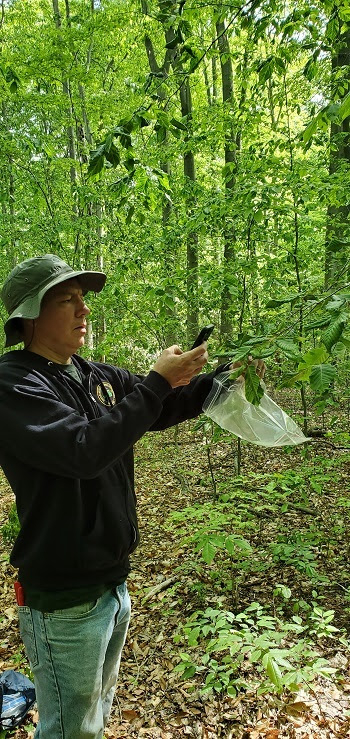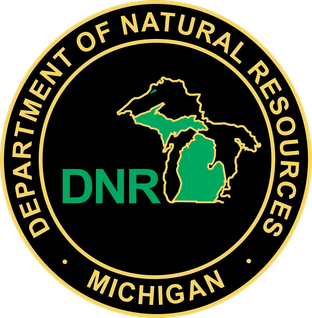Beech leaf disease found in more southeast Michigan counties; still time to check trees for symptoms
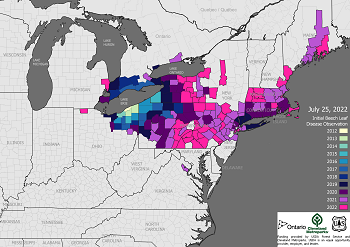
Invasive beech leaf disease was first confirmed in Michigan in July 2022 after landowners noticed its characteristic thickened leaf bands on trees in a small woodlot in St. Clair County. Since then, new detections in Oakland and Wayne counties indicate the disease is more widespread.
Beech leaf disease is associated with the nematode Litylenchus crenatae, a microscopic worm that enters and spends the winter in leaf buds, causing damage to leaf tissue on American, European and Asian beech species. Trees weakened by leaf damage become susceptible to other diseases and can die within six to 10 years after initial symptoms.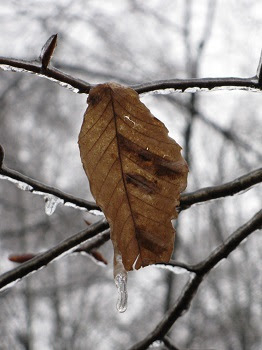
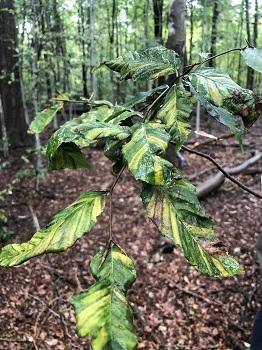
| Affected trees have been found on properties in Birmingham, Bloomfield, China, Clay, Grosse Pointe Shores, Rochester and Troy. The condition of the leaves at these sites suggests the infestations have been present for at least a year, possibly longer.
Though leaves are changing and beginning to fall, Simeon Wright, Michigan Department of Natural Resources forest health specialist, says there is still time to check beech trees for signs of the disease. “We’ve now seen beech leaf disease in both woodlots and individual urban trees in southeast Michigan. The disease causes dark, thick bands between leaf veins, which can be seen on both green and brown leaves,” said Wright. “If you have beech trees, take time now to look for symptoms.” Beech leaf disease nematodes also are associated with damaged leaf tissue and dead buds. From one year to the next, leaf curling and distortion may progress, resulting in withered or yellow leaves and a thin canopy. Noticeable leaf loss can occur in early summer on heavily infested trees. |
Why be concerned?
Many questions about beech leaf disease remain unanswered. Researchers are still working to understand if the Litylenchus crenatae nematode is the primary cause of the disease or the carrier of another causal agent responsible for the disease.
“Because of this, we don’t yet know all the ways the disease might be spread,” said Wright. “Currently there are no known treatments to protect trees or reduce disease impacts, although trials are ongoing.”
Michigan is home to approximately 37 million American beech trees. The potential spread of this disease through the region could have a devastating effect on beech trees, which play a significant role in both forests and urban landscapes across the state.
Report potential infestations
Take time now to look for any signs of the disease on American or ornamental beech trees. If you suspect you have found a symptomatic tree, take one or more photos of the infested tree, including close-ups of affected leaves; note the location, date and time; and report it in one of the following ways:
|
Avoid moving beech material
| First identified in Ohio in 2012, beech leaf disease has now been documented in areas of Connecticut, Massachusetts, Maine, Michigan, New Hampshire, New Jersey, New York, Pennsylvania, Rhode Island, Virginia and Ontario.
The microscopic nematodes cannot move long distances on their own. It is possible that the disease can spread through the movement of infested nursery stock and other beech material containing leaves and buds. As a precaution, beech trees, tree material and firewood should not be moved from areas of known infestation. |
What is being done?
Beech leaf disease was added to Michigan’s invasive species watch list in January 2021 to encourage nurseries, foresters, residents and land managers to look for and report suspected infestations.
Tree surveys continue across the state, with Michigan State University forest health researchers reporting no additional detections of beech leaf disease in their surveys this year. Researchers from University of Michigan’s School for Environment and Sustainability are planning surveys for 2023, and the DNR and Michigan Department of Agriculture and Rural Development are working with cooperative invasive species management areas in southeast Michigan to broaden survey efforts near affected areas.
For more information including how to identify some common diseases frequently mistaken for beech leaf disease, visit Michigan.gov/Invasives/ID-Report/Disease/Beech-Leaf-Disease.

